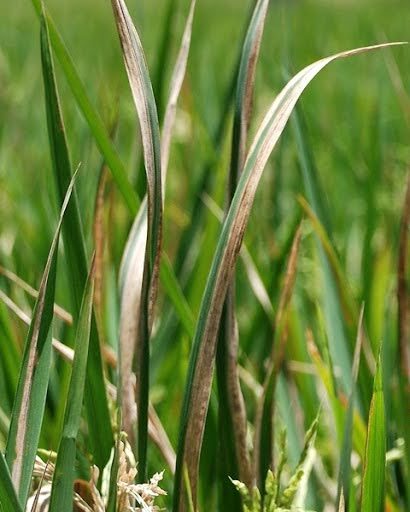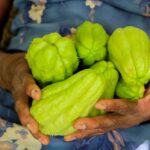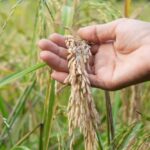Rice, also known as paddy, is a staple food for more than half of the world’s population. As one of the most important crops globally, ensuring its healthy growth and high yield is crucial for food security. However, paddy crops are susceptible to various diseases that can significantly impact production. This comprehensive guide aims to help rice farmers and agricultural professionals understand, identify, and manage common paddy diseases effectively.
Introduction to Paddy Diseases
Paddy diseases are a significant threat to rice production worldwide. These diseases can be caused by various pathogens, including fungi, bacteria, and viruses. They can affect different parts of the rice plant, such as leaves, stems, roots, and grains, leading to reduced yield and quality of the harvest. Understanding these diseases is crucial for implementing effective management strategies and ensuring sustainable rice production.
Major Categories of Paddy Diseases
Paddy diseases can be broadly categorized into three main types based on the causative agents:
Fungal Diseases
- Caused by various species of fungi
- Generally the most common and widespread type of paddy diseases
- Examples include rice blast, sheath blight, and brown spot
- Often thrive in humid conditions
- Can affect all parts of the plant including leaves, stems, roots, and grains
- Typically spread through spores that can travel by wind or water
Bacterial Diseases
- Caused by different species of bacteria
- Often favoured by warm and humid conditions
- Examples include bacterial leaf blight and bacterial leaf streak
- Can spread rapidly under favourable conditions
- Often enter the plant through natural openings or wounds
- Can be transmitted through contaminated water, seeds, or tools
Viral Diseases
- Caused by various plant viruses
- Usually transmitted by insect vectors, particularly leafhoppers and planthoppers
- Examples include rice tungro disease and rice yellow mottle virus
- Cannot be directly controlled with pesticides
- Management often focuses on vector control and use of resistant varieties
- Can cause systemic infections, affecting the entire plant
Each category has its unique characteristics, symptoms, and management approaches. Let’s explore some of the most common and economically important diseases in each category.
Fungal Diseases
Fungal diseases are among the most prevalent and destructive paddy diseases. They can cause significant yield losses and are often challenging to control due to their ability to spread rapidly under favourable conditions.
1. Rice Blast
Rice blast, caused by the fungus Magnaporthe oryzae, is one of the most severe and widespread paddy diseases globally.
Symptoms:
- Diamond-shaped lesions with dark borders on leaves
- Infected nodes turn blackish and break easily
- Neck blast causes panicle to turn white and sterile
Management:
- Use resistant varieties
- Balanced fertilization, especially avoiding excess nitrogen
- Fungicide application at critical growth stages
- Proper water management to avoid drought stress
2. Sheath Blight
Sheath blight, caused by Rhizoctonia solani, is another major fungal disease affecting rice crops worldwide.
Rice sheath blight is one of the most economically significant rice diseases worldwide. This disease causes significant grain yield and quality losses. Yield losses of up to 50% have been reported under most conducive environments. Sheath blight is a soilborne disease caused by the fungus Rhizoctonia solani AG1-IA. The fungus belongs to the phylum Basidiomycota, family Ceratobasidiaceae.
Symptoms:
- Oval or irregular greenish-gray lesions on leaf sheaths and leaves
- Lesions coalesce, causing large areas of damage
- In severe cases, entire plants may die
Management:
- Crop rotation with non-host plants
- Proper spacing to reduce humidity in the canopy
- Fungicide application at the early stages of infection
- Biological control using antagonistic microorganisms
3. Brown Spot
Brown spot, caused by Cochliobolus miyabeanus (anamorph: Bipolaris oryzae), is often associated with nutrient-deficient soils.
Symptoms:
- Small, circular to oval brown lesions on leaves
- Dark brown to black spots on grains
- Premature ripening of grains
Management:
- Balanced soil fertility, especially potassium
- Seed treatment with fungicides
- Foliar fungicide application in severe cases
- Use of resistant varieties
Bacterial Diseases
Bacterial diseases in paddy can spread rapidly under warm and humid conditions, causing significant crop losses if not managed properly.
1. Bacterial Leaf Blight

Bacterial leaf blight, caused by Xanthomonas oryzae pv. oryzae, is one of the most serious bacterial diseases of rice.
Symptoms:
- Water-soaked lesions on leaf margins that turn yellow and then greyish-white
- Lesions expand and merge, causing leaf death
- Wilting of seedlings in severe cases
Management:
- Use of resistant varieties
- Balanced fertilization, avoiding excess nitrogen
- Proper water management to prevent waterlogging
- Copper-based bactericides in severe cases
2. Bacterial Leaf Streak
Bacterial leaf streak, caused by Xanthomonas oryzae pv. oryzicola, is another important bacterial disease affecting rice production.
Symptoms:
- Narrow, water-soaked streaks between leaf veins
- Streaks turn yellow to brown as they expand
- Translucent appearance when held against light
Management:
- Crop rotation with non-host plants
- Proper field sanitation and weed control
- Use of disease-free seeds
- Application of copper-based bactericides in severe cases
Viral Diseases
Viral diseases in paddy are often transmitted by insect vectors and can cause significant yield losses. They are particularly challenging to manage as there are no direct control measures against viruses.
1. Rice Tungro Disease
Rice tungro disease is caused by a complex of two viruses: Rice tungro bacilliform virus (RTBV) and Rice tungro spherical virus (RTSV), transmitted by green leafhoppers.
Symptoms:
- Stunted growth and reduced tillering
- Yellow to orange discoloration of leaves
- Delayed flowering and reduced yield
Management:
- Use of resistant varieties
- Control of insect vectors through insecticides or biological means
- Adjustment of planting time to avoid peak vector populations
- Removal and destruction of infected plants
2. Rice Yellow Mottle Virus
Rice yellow mottle virus (RYMV) is an important viral disease in Africa, transmitted by beetles and mechanical means.
Symptoms:
- Yellow or pale green mottling of leaves
- Stunted growth and reduced tillering
- Malformed and partially filled grains
Management:
- Use of resistant varieties
- Control of insect vectors
- Proper field sanitation and weed management
- Avoiding mechanical transmission through contaminated tools
Key Factors Influencing Disease Development
Understanding the factors that influence disease development is crucial for effective management. Some key factors include:
1. Environmental conditions: Temperature, humidity, and rainfall patterns significantly affect disease occurrence and severity.
2. Plant susceptibility: The genetic makeup of rice varieties determines their resistance or susceptibility to specific diseases.
3. Pathogen virulence: The ability of pathogens to cause disease can vary among strains and evolve over time.
4. Cultural practices: Farming methods, including irrigation, fertilization, and crop rotation, can influence disease development.
5. Vector populations: For diseases transmitted by insects, the prevalence of vector populations plays a crucial role.
Disease Management Strategies
Effective management of paddy diseases requires an integrated approach combining various strategies:
Cultural Practices
- Crop rotation with non-host plants
- Proper field sanitation and removal of crop residues
- Adjustment of planting dates to avoid peak disease periods
- Proper water management and drainage
- Balanced fertilization
Chemical Control
- Seed treatment with fungicides or bactericides
- Foliar application of pesticides at critical growth stages
- Use of systemic and contact fungicides for fungal diseases
- Application of copper-based bactericides for bacterial diseases
Biological Control
- Use of antagonistic microorganisms
- Application of plant growth-promoting rhizobacteria (PGPR)
- Utilization of natural plant extracts with antimicrobial properties
Integrated Disease Management
Combining multiple approaches for optimal disease control:
- Use of resistant varieties
- Implementation of cultural practices
- Judicious use of chemicals
- Incorporation of biological control agents
- Regular monitoring and early detection of diseases
Emerging Technologies in Paddy Disease Management
Advancements in technology are providing new tools for disease management:
1. Remote sensing: Use of satellite imagery and drones for early detection of disease outbreaks.
2. Precision agriculture: Application of site-specific treatments based on disease risk assessment.
3. Genetic engineering: Development of disease-resistant rice varieties through genetic modification.
4. Nanotechnology: Use of nanoparticles for targeted delivery of pesticides and enhanced disease resistance.
5. Artificial intelligence: Development of disease prediction models and decision support systems.
Economic Impact of Paddy Diseases
Paddy diseases can have severe economic consequences:
- Reduced yield and quality of harvested rice
- Increased production costs due to disease management expenses
- Impact on food security and livelihoods of farming communities
- Potential trade restrictions due to quarantine regulations
Understanding the economic impact helps in prioritizing research and management efforts for different diseases.
Conclusion
Effective management of paddy diseases is crucial for ensuring sustainable rice production and global food security. By understanding the various types of diseases, their symptoms, and management strategies, farmers and agricultural professionals can implement targeted approaches to minimize crop losses. Integrating traditional practices with emerging technologies and staying informed about the latest research developments will be key to successfully combating paddy diseases in the future. As climate change and evolving pathogen populations continue to pose new challenges, ongoing research and adaptation of management strategies will be essential for maintaining healthy and productive rice crops worldwide.
Sources:
https://izumibiosciences.in/rice-blast-disease-symptoms-disease-cycle-and-management/
https://www.apsnet.org/edcenter/disandpath/fungalasco/pdlessons/Pages/RiceSheath.aspx
http://www.knowledgebank.irri.org/training/fact-sheets/pest-management/diseases/item/brown-spot
http://www.knowledgebank.irri.org/decision-tools/rice-doctor/rice-doctor-fact-sheets/item/bacterial-blight
http://www.knowledgebank.irri.org/training/fact-sheets/pest-management/diseases/item/bacterial-leaf-streak
http://www.knowledgebank.irri.org/training/fact-sheets/pest-management/diseases/item/tungro
https://plantix.net/en/library/plant-diseases/200021/rice-yellow-mottle-virus/


